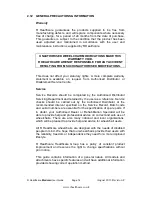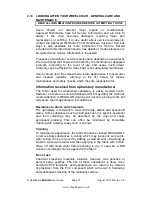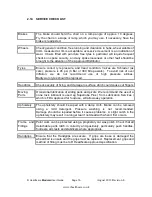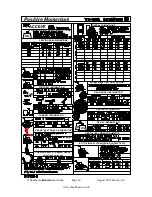
R Healthcare
Modular
User Guide
Page
28
August 2013 Revision E
www.rhealthcare.co.uk
2.9
OCCUPANT CONTROLLED MOBILITY
Handrims
These are provided for the occupant to grip and push round to propel
the wheels. Best results will be obtained by a long pushing stroke,
which gives a continuous and smooth forward motion. Many users find
that gripping across the tyre and handrim at the same time gives better
control. We recommend that when operating in this way, wheelchair
gloves are worn
.
Users with gripping difficulties may find larger section
or Capstan types, with easy grip features, more practical.
When using a handrim to turn a chair round in a tight space, push one
wheel forward, whilst pulling the other wheel backwards. Always make
sure when carrying out this manoeuvre, that there are no obstructions
or bystanders in the turning space required.
Balance Training
Physically active, independent people require wheelchairs, which allow
them to safely negotiate kerbs and achieve efficient control and
manoeuvrability. It can be hazardous for an occupant to attempt
wheelie positions on wheelchairs, which are stable above 10 degrees
rearwards static stability, as physical effort needed to manoeuvre and
pull a wheelie can be excessive, consequently increasing the risk of
accidentally tipping over backwards.
Maximum efficiency of hand propulsion occurs when occupant centre
of gravity and wheel centre coincide, and is dependent on the
occupant shape and size.
Physically active people should have
wheelchairs with fine wheel position balance settings, i.e. below 10
degrees rearward stability. These chairs should have rear stabilisers
when supplied to inexperienced users, allowing the user to practice
balancing techniques with the reassurance that the chair will not
accidentally tip over backwards.
During training, the Therapist, or Training Supervisor can therefore
build up the confidence of the occupant in stages, by initially setting the
wheelchair up in a safe balance position, with the stabilisers acting
positively, and progressing gradually towards optimum performance
settings, with the stabilisers only acting as a back up.
Once satisfied that the occupant has developed the full range of
wheelchair skills, and provided that the medical condition is not
compromised, the therapist can authorise removal of the stabilisers,
and the occupant then takes full responsibility and control of the
wheelchair.
STABILISERS ARE FOR OCCUPANT SAFETY
THEY SHOULD NOT BE REMOVED UNTIL THE USER IS ABLE TO
DEAL WITH BACKWARD FALLS AND TIP OUTS.














































